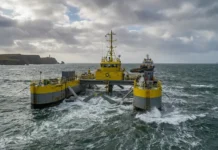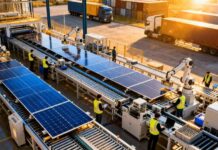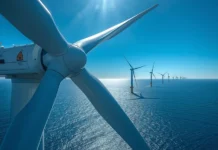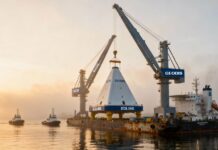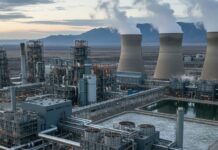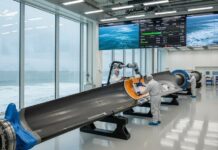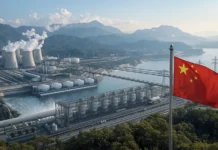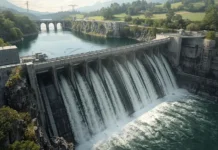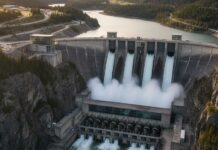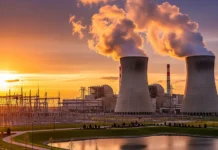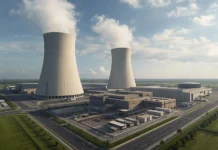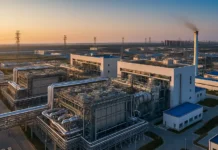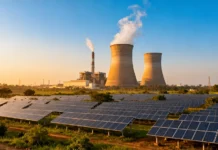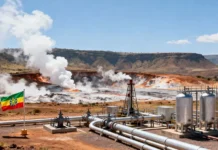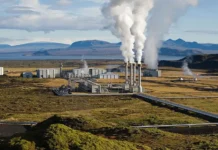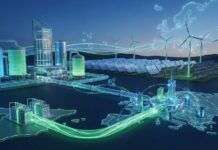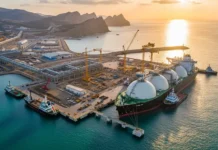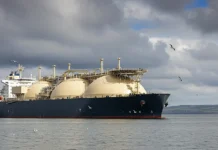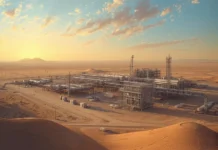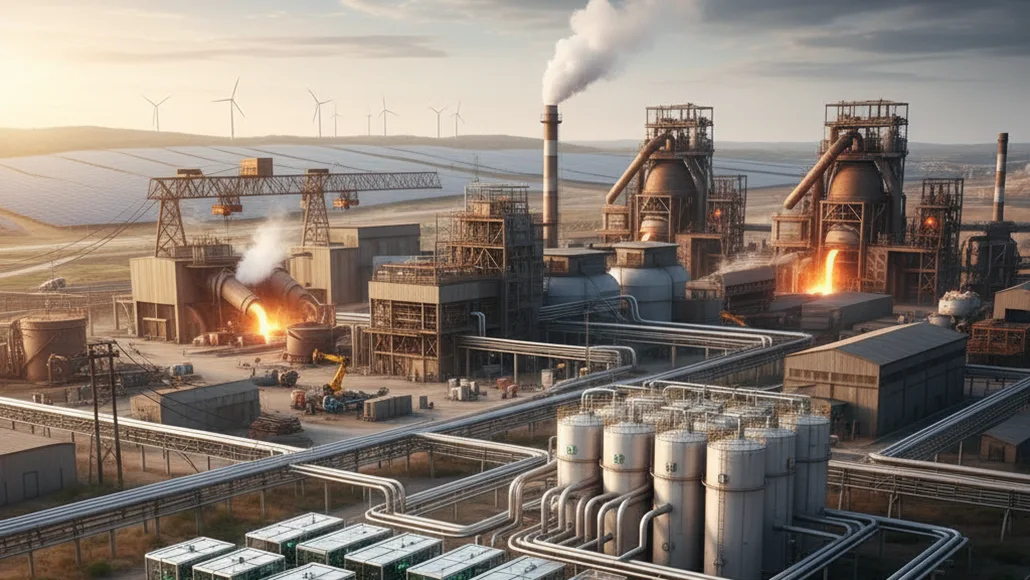Decarbonization Pathways for Power Generation in Heavy Industry
The transition to net-zero emissions represents one of the most significant challenges facing heavy industry, as decarbonization pathways for power generation require fundamental transformations in how energy-intensive processes operate and source their power requirements. Heavy industrial sectors including steel production, cement manufacturing, chemicals, aluminum production, and other energy-intensive processes contribute approximately 30% of global carbon emissions, making their decarbonization essential for meeting international climate objectives.
Decarbonization strategies for heavy industry encompass multiple complementary approaches including electrification of thermal processes, implementation of carbon capture technologies, adoption of hydrogen power as a clean fuel source, and comprehensive electrification in industry initiatives that replace fossil fuel combustion with renewable electricity-powered alternatives. The complexity of industrial processes and their high-temperature requirements create unique challenges that require tailored solutions and innovative technologies.
The clean energy transition in heavy industry demands massive investments in new technologies, infrastructure modifications, and process redesigns that can maintain production capabilities while dramatically reducing carbon emissions. Success requires coordinated efforts across technology development, policy frameworks, financial mechanisms, and supply chain transformations that enable widespread adoption of clean technologies.
Industrial emissions reduction initiatives must balance multiple objectives including maintaining competitiveness, ensuring reliable operations, meeting quality standards, and achieving substantial carbon footprint reductions. The scale and complexity of this transformation require systematic approaches that prioritize the most effective decarbonization strategies while managing implementation risks and costs.
The Industrial Decarbonization Challenge
Heavy industry faces unique decarbonization challenges due to process requirements that have historically depended on fossil fuel combustion for high-temperature thermal processes, chemical reactions, and material transformations. Steel production requires temperatures exceeding 1500°C for iron ore reduction and melting, while cement manufacturing demands temperatures above 1400°C for clinker formation.
These extreme temperature requirements have made direct fossil fuel combustion the dominant energy source for industrial processes, as achieving such temperatures through other means has been technically challenging and economically unviable. Additionally, many industrial processes produce carbon dioxide as a direct result of chemical reactions, not just energy combustion, creating process emissions that cannot be eliminated through fuel switching alone.
The scale of industrial energy consumption represents another significant challenge, as heavy industry accounts for approximately 37% of global energy consumption and generates massive quantities of carbon emissions. Steel production alone generates approximately 2.6 billion tons of CO2 annually, while cement production contributes another 2.9 billion tons through both process and energy emissions.
Economic competitiveness concerns create additional complexity for industrial decarbonization, as companies must maintain cost-competitive operations while investing in new technologies that may initially increase production costs. International trade considerations require coordinated global approaches to prevent carbon leakage where production shifts to regions with less stringent environmental requirements.
Electrification Strategies for Industrial Processes
Electrification in industry offers tremendous potential for emissions reduction when powered by renewable energy sources, as direct electrification can achieve very high efficiency rates while eliminating direct fossil fuel combustion. Electric heating technologies including resistance heating, induction heating, and electric arc systems can provide precise temperature control and high efficiency for many industrial applications.
Steel production electrification through electric arc furnaces can dramatically reduce emissions compared to traditional blast furnace operations. Electric arc furnaces powered by renewable electricity can achieve emissions as low as 0.7 tons of CO2 per ton of steel compared to 2.3 tons for conventional blast furnace production.
Aluminum production already relies heavily on electrification through the Hall-Héroult electrolytic process, but decarbonization requires transitioning from fossil fuel-powered electricity to renewable energy sources. Clean electricity can reduce aluminum production emissions by up to 85% compared to coal-powered production.
Chemical industry electrification includes steam cracking processes powered by renewable electricity, electrolytic hydrogen production for chemical synthesis, and electric heating for various chemical reaction processes. These applications can significantly reduce both energy and process-related emissions.
Cement production electrification faces technical challenges due to extremely high temperature requirements, but emerging technologies including plasma heating and electric kilns show promise for reducing fossil fuel dependence while maintaining product quality and production rates.
Carbon Capture, Utilization, and Storage Technologies
Carbon capture technologies provide essential pathways for decarbonizing industrial processes that cannot completely eliminate CO2 emissions through fuel switching or electrification. Industrial facilities often represent ideal candidates for carbon capture due to concentrated CO2 sources and integration opportunities with existing infrastructure.
Post-combustion carbon capture systems can be retrofitted to existing industrial facilities to capture CO2 from flue gases after fuel combustion. These systems typically use chemical solvents to absorb CO2 from exhaust streams, enabling capture rates of 85-95% while allowing continued operation of existing process equipment.
Pre-combustion carbon capture involves gasifying solid fuels or reforming gaseous fuels to produce hydrogen and CO2, with the CO2 captured before hydrogen combustion. This approach can achieve higher capture rates while producing hydrogen as a clean fuel for industrial processes.
Direct air capture technologies remove CO2 directly from ambient air using specialized sorbents or solvents. While energy-intensive, these systems can provide carbon removal services while potentially supplying captured CO2 for industrial utilization applications.
Carbon utilization applications convert captured CO2 into valuable products including chemicals, fuels, and building materials. These processes can create revenue streams from captured carbon while reducing overall emissions through product substitution and avoided emissions.
Carbon storage involves permanent sequestration of captured CO2 in geological formations including depleted oil and gas fields, saline aquifers, and other suitable underground locations. Safe and permanent storage requires comprehensive site characterization, monitoring, and verification systems.
Hydrogen as an Industrial Fuel and Feedstock
Hydrogen power applications in heavy industry include both energy and feedstock uses that can dramatically reduce carbon emissions when produced using renewable electricity through electrolysis. Green hydrogen production using renewable electricity releases no direct CO2 emissions and can provide clean energy for high-temperature industrial processes.
Steel production using hydrogen direct reduction can eliminate coal and coke consumption while producing high-quality iron for electric arc furnace steelmaking. Hydrogen-based steel production can reduce emissions by up to 95% compared to conventional blast furnace operations.
Chemical industry hydrogen applications include ammonia production for fertilizers, refinery operations for petroleum processing, and methanol synthesis for chemical feedstocks. These applications currently consume substantial quantities of grey hydrogen produced from fossil fuels, creating opportunities for emission reduction through green hydrogen substitution.
Cement production hydrogen applications include fuel substitution for kiln heating and potential process modifications that could reduce limestone calcination requirements. While technical challenges remain, hydrogen offers potential pathways for substantial cement industry emission reductions.
Glass manufacturing can utilize hydrogen as a clean fuel for high-temperature melting processes, eliminating natural gas combustion while maintaining product quality and production rates. Several glass manufacturers have successfully demonstrated hydrogen firing in production facilities.
Advanced Electrification Technologies
Emerging electrification technologies continue expanding opportunities for industrial emissions reduction through innovative approaches that can achieve the high temperatures and process requirements of heavy industry. Plasma heating systems can reach extremely high temperatures using electrical energy while providing precise process control.
Induction heating technologies provide efficient and controllable heating for metal processing applications, offering rapid heating rates and precise temperature control while eliminating combustion emissions. These systems can achieve temperatures sufficient for most metal processing applications.
Microwave heating applications utilize electromagnetic energy to heat materials directly, providing rapid and uniform heating for various industrial processes. These technologies can reduce energy consumption while eliminating direct combustion emissions.
Electric boilers and steam generation systems can provide industrial process steam using renewable electricity, eliminating natural gas consumption for steam production while maintaining steam quality and reliability.
Molten oxide electrolysis represents a breakthrough technology that can directly reduce metal ores using renewable electricity, potentially eliminating fossil fuel requirements for primary metal production while achieving high efficiency and product quality.
Process Innovation and Circular Economy
Clean energy transition strategies increasingly emphasize process innovations that fundamentally redesign industrial operations to minimize energy requirements and carbon emissions. Circular economy principles focus on material recycling, waste reduction, and resource efficiency that can dramatically reduce industrial energy consumption and emissions.
Steel industry innovations include increased scrap steel recycling through electric arc furnaces, development of the HIsarna process that eliminates coke production and sintering steps, and direct reduced iron production using hydrogen or renewable electricity.
Cement industry innovations include alternative cement formulations that require less limestone and lower process temperatures, carbon curing technologies that utilize CO2 for concrete strengthening, and recycled content integration that reduces virgin material requirements.
Chemical industry circular economy applications include plastic recycling technologies that can process waste plastics into new chemical feedstocks, bio-based chemical production using renewable feedstocks, and process integration that maximizes resource efficiency.
Policy Frameworks and Economic Incentives
Successful industrial decarbonization requires supportive policy frameworks that address cost competitiveness concerns while incentivizing clean technology adoption. Carbon pricing mechanisms create economic signals that make low-carbon technologies more competitive while generating revenue for clean technology investments.
The European Union Carbon Border Adjustment Mechanism creates incentives for global industrial decarbonization by imposing carbon costs on imports from regions without equivalent climate policies. This approach helps protect domestic industries implementing decarbonization while encouraging global emission reductions.
Government research and development funding accelerates clean technology development and deployment by supporting demonstration projects, technology scaling, and risk reduction for innovative approaches. Public investment can help bridge the valley of death between laboratory research and commercial deployment.
Clean energy infrastructure development including renewable electricity generation, hydrogen production facilities, and CO2 transport and storage networks requires coordinated public and private investment to enable industrial decarbonization at scale.
Financial Mechanisms and Investment Requirements
Industrial decarbonization requires massive capital investments estimated at trillions of dollars globally to transform energy-intensive processes and infrastructure. Innovative financing mechanisms including green bonds, blended finance, and public-private partnerships can help mobilize necessary investment capital.
Risk mitigation instruments including loan guarantees, insurance products, and offtake agreements can reduce investment risks and lower capital costs for clean technology deployment. These mechanisms are particularly important for first-of-kind technology deployments.
Carbon credit markets can provide additional revenue streams for industrial decarbonization projects, improving project economics while incentivizing early action on emission reductions. High-quality carbon credits from industrial projects can command premium prices.
Technology cost reduction trends suggest that many clean industrial technologies will achieve cost parity with conventional alternatives within the next decade, driven by learning curve effects, scale economies, and continued innovation.
Regional Implementation Strategies
Different regions face unique challenges and opportunities for industrial decarbonization based on resource availability, policy frameworks, and industrial structures. Regions with abundant renewable energy resources have advantages for electrification and green hydrogen production strategies.
The United States leads industrial decarbonization with 90 commercial-scale net-zero aligned projects in various development stages, supported by substantial federal funding through the Inflation Reduction Act and Infrastructure Investment and Jobs Act.
European industrial decarbonization efforts focus on carbon pricing, technology development, and coordinated policy frameworks that address competitiveness concerns while driving emission reductions across member states.
Developing economies face unique challenges related to industrial growth, energy access, and financial resources, requiring tailored approaches that balance development needs with climate objectives through technology transfer and international cooperation.
Technology Integration and System Optimization
Comprehensive industrial decarbonization requires integration of multiple technologies and approaches that work together to achieve maximum emission reductions while maintaining operational efficiency. System optimization considers interactions between electrification, carbon capture, hydrogen utilization, and process innovations.
Digital technologies including artificial intelligence, machine learning, and advanced process control can optimize clean technology performance and integrate multiple decarbonization strategies for maximum effectiveness. These systems can balance multiple objectives including cost minimization, emission reduction, and production requirements.
Energy system integration connects industrial facilities with broader energy networks to optimize renewable energy utilization, provide grid services, and enable flexible operations that support overall system decarbonization.
Decarbonization pathways for power generation in heavy industry require coordinated implementation of multiple clean technologies, supportive policy frameworks, and substantial investment to transform energy-intensive processes while maintaining industrial competitiveness. The combination of electrification, carbon capture, hydrogen applications, and process innovations provides comprehensive pathways for achieving net-zero industrial operations. Success depends on continued technology development, supportive policy environments, innovative financing mechanisms, and international cooperation that enables global industrial transformation. As clean technologies mature and costs decline, industrial decarbonization will become increasingly feasible and economically attractive, positioning early movers for competitive advantage in the clean energy economy.
Key Takeaways:
- Heavy industry contributes 30% of global carbon emissions, requiring fundamental process transformations
- Electrification powered by renewables can reduce steel production emissions by up to 95%
- Carbon capture technologies enable emission reductions from processes that cannot be fully electrified
- Green hydrogen offers clean fuel alternatives for high-temperature industrial processes
- Policy frameworks and financial incentives are essential for enabling large-scale industrial decarbonization



